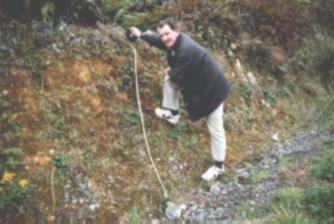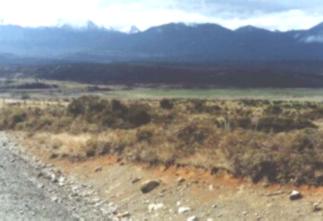Pyramids In The Pacific

The Unwritten History Of Australia
Chapter 31
|
The Dawn of People of Stone-Age New Zealand |
"Man has been a long time upon the face of the
earth, and drift vessels, if nothing else, would
have brought him into this area. Either the present
Polynesians have been here much longer than we
know of, or there was a prior people in the isles".
Elsdon Best {1856-1931}
"Polynesian Voyages".
|
Chapter
31 Images
|

|
Ancient Rock Stratas Rex Gilroy
|
Pyramids
in the Pacific Ch 31
|
While conservative university based archaeologists and anthropologists persist in their dogmatic belief, that the first human inhabitants of New Zealand were Polynesians, who only arrived there around 1000 AD; crude stone tools lie scattered about the landscape, the work of primitive hominids whose origins lie in the dawn mists of human evolution. They are the"dawn people" of New Zealand, and the evidence for their former presence, threatens to one day overturn the traditional stone-age history of that land. Maori traditions preserve many accounts of other, earlier stone-age people who proceded them to New Zealand.
Among these were the Moehau, a hairy race who manufactured crude stone tools and wood implements. They were feared by the North Island Maoris, who stayed clear of the mountains of Ruapehu and Tongariro, because these mountains were inhabited by "terrible creatures", half man, half animal, who would kill and eat any Maoris who dared venture into their domain. Both Maori and Moriori legends also speak of great stature; these include beings like the Matau, the Tuuhourangi and Toangina, whose heights varied from 2.6 to 3m.
All were tool making beings.The Toanginas were the scourge of the lower reaches of the Waikato River, attacking Maoris fishing there. The Lake Wakatipu area of Central Otago was the home of the Matau giants; monsters of 3m height. There were also the Maero or "wild men" of the forest country of both North and South Islands, and whose features, like those of the Moehau, are reminiscent of the Yowie, or "hairy man" of ancient Australian Aboriginal folklore, now identified as Homo erectus. Towering over all, however was the 4m or so tall Forest Taniwahs, who roamed the mountains and forests with huge stone axes, killing and eating anyone unfortunate to cross their path.
Two types of primitive hominid thus appear to have been present in old New Zealand; a normal-size race, the Moehau and Maero; and one or more giant races of which Matau, Tuuhourangi and Toangina may represent a single race. The forest Taniwah on the other hand, appears to have been something else, as the Maoris were adamant that these hominids were taller and more powerful than the other giants. Not only have the massive stone tools of these beings been found throughout New Zealand but also giant and normal fossilised human footprints have come to light.
Two such fossils were discovered by this author in September, 1997 in the Mount Cook area of the South Island. At the base of the mountain near the "hermitage", as I was walking over mudstone shoal, I noticed the outline of a large human foot impression. It measured 36cm long by 13cm wide across the toes, 12 cm wide across the mid-foot and 9cm across the heel. Later, near the turnoff to Mount Cook, while fossicking near the road among old glacial deposits, I chanced to stumble across a second, though smaller mudstone preserved fossil human foot impression. This measured 22.5cm long by 14.5cm across the toes, 11cm wide at the mid-foot and 10cm across the heel.
On Friday 7th of June during our May/June 1996 New Zealand field investigation. At a point just north of the west coast town of Ross, in the South Island, we found protruding from ancient stratas near along dried up inlet about 1km in from the ocean, four crude implements, consisting of a large, 28cm wide by 16.5cm high chopping tool, together with another 11cm by 10cm chopper; a 9.5cm bone smashing pebble tool and a hand axe measuring 10.5cm wide by 14.8cm tall. I recognised features which favourably compares these implements with other, Java Man {Homo Erectus} tool types found at ancient extinct lake sites in New Zealand, New England {northern New South Wales, Australia} and elsewhere [See Chapter 1 in "Pyramids in the Pacific"}. The tools came from old glacial gravels suggesting considerable age.

|
Teanau